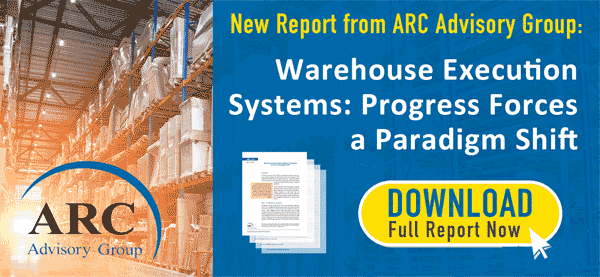2021 Supply Chain Predictions from the Analysts Part 1
Now that we're done with our review of the year in supply chain, it's time as usual for some looks for a couple of weeks at what leading analysts have in their crystal balls in terms of predictions for 2021 and and beyond.
This week, we'll start with Gartner, and its "predicts" 2021 relative to supply chain technology.
| GILMORE SAYS: |
WHAT DO YOU SAY?'
A recent Gartner study found that 36% of the companies responding had a technology leadership role of some type reporting directly within the supply chain organization.
Send us your
Feedback here
|
Before five differ predictions by five different analysts, the research calls out the growing role of going "digital" in the supply chain, noting that "digital is now a strategic imperative for the vast majority of supply chain organizations and this will have a notable influence on how and where companies invest in people, process and technology over the next three to five years."
Gartner finds, for example, that 20% of companies have invested in or gone live with one or more digital initiatives in terms of core supply chain processes.
But as I always ask when it comes to digital, what does it really mean? Digital seems largely defined as a collection of different technologies: advanced analytics, Internet of Things, 3D printing, etc., without a real unifying theme.
So if a company implements a new Warehouse Management or Transportation Management system, is that "digitizing" a core supply chain processes? Seems to me the answer is Yes - which means it's hard to say what is really new about Digitization other than we now have some additional tools in the the cupboard.
That said, it seems clear many CEOs are keen on digitization, egged on by big consulting firms pitching a vision. So that interest naturally flows down from the CEO to the supply chain, so we better be largely on-board.
Now, let' s take a look at a few of most interesting predictions.
Gartner's Dwight Klappich has been writing favorably about autonomous mobile robots (AMRs) for about three years now. This year Klappich predicts that "Through 2023, demand for robotic goods-to-person systems [of which AMRs are one form] will quadruple to help enforce social distancing in warehouses.
Klappich notes that "There have been a variety of proposed solutions to social distancing, from the draconian to the benign." One of the simplest approaches is using IoT type devices to track each DC worker's every move all day. The captured data can be used to identify social distancing violations or group gatherings. But he notes, tracking employees' every move is considered by some to be too invasive, and unions and other employee advocacy groups often fight this level of monitoring.
 "An easier and less invasive approach to enforcing social distancing would be to keep the person in one place and then use virus-resistant automation, like robots, to move goods around," Klappich says. "An easier and less invasive approach to enforcing social distancing would be to keep the person in one place and then use virus-resistant automation, like robots, to move goods around," Klappich says.
These technologies are commonly referred to as goods-to-person (G2P) systems. There are a number of different approaches to G2P (e.g., AMRs, shuttle systems, more), giving companies many options to craft a solution that works for them operationally and economically.
"G2P solutions enable soft enforcement of social distancing by placing people six feet or more apart, while robots move," Klappich adds.
He says that G2P systems are also easy and economical to deploy not only to enforce social distancing but also to achieve notable productivity improvements, such as using the robots to perform low-value-added tasks such as moving goods around.
What to do? Among Klappich's recommendations: "Perform experiments to test how current processes can be directly compared with new processes designed specifically around G2P capabilities. Seek creative solutions by experimenting with many G2P scenarios."
Next up, Bart De Muynck, who follows transportation-related technologies for Gartner. He predicts that "By 2023, 50% of global product-centric enterprises will have invested in real-time transportation visibility platforms."
Such technology is hot right now, no question about that. The fundamental challenge driving this market adoption: "Once shipments leave a brand owner's, supplier's or service provider's warehouse, customers and consumers have little visibility into the status of their orders and shipments," De Muynck writes.
This situation no longer cuts it in terms of the need to react quickly to any variances from what is expected, and to be able to do things such as accurately predict when a truck will arrive.
De Muynck uses the rather lengthy term Real-Time Transportation Visibility Platforms (RTTVPs) to categorize this class of solution - I am not sure that six-letter acronym is going to stick.
There are a growing number of such solutions, he adds, and these systems differ a wide range of capabilities or focus areas. Those would include multi-model visibility versus single mode; shipment (load) tracking versus product (down to box and SKU) tracking; positioning tracking versus conditioning tracking (for example, temperature, humidity, pressure and damage), domestic versus international visibility, and more. So how should shippers sort all this out? Among De Muynck's recommendations: "Provide real-time transportation visibility for internal and external customers by identifying the best platforms for connecting to carriers. Select vendors based on regional and modal coverage and how they align to the company's carrier network."
Finally for this column, Gartner analysts Greg Aimi and Pia Orup Lund predict that "By 2025, more than 50% of supply chain organizations will have a technology leadership role reporting directly to the CSCO."
Maybe surprisingly, a recent Gartner study found that 36% of the companies responding had a technology leadership role of some type reporting directly within the supply chain organization. Furthermore, 53% of companies that identified as being leading performers had technology leadership reporting directly into the supply chain organization.
That seems high to me, and of course begs the question of how these technology positions or even small organizationsi in supply chain share roles and responsibility with central IT.
Aime and Lund say they are already seeing roles under supply chain with titles such as supply chain technology strategy and planning, technology infrastructure and operations, and BI and information management.
However, in some cases, there is a designated supply chain technology leader, but that role reports into the CIO's organization, Gartner says.
"As the progression of digital initiatives expands within supply chain strategy and design, process and technology will be more fundamentally integrated," Aime and Lund predict, adding "Gartner projects the supply chain organization will require technology leadership within it to deliver at the pace companies require."
What should companies do? Among the recommendations from Aime and Lund is this: "Be the most responsive with the technology needs of new digital supply chain operating models by having CSCOs form and appoint a supply chain technology leader role directly within the supply chain."
I think the CIO will have a thing or two to say about that, but I understand the need.
So there you have it. Three technology predictions from Gartner. In my view, solid prognostications, but none of the five (I didn't include two others here) was especially provocative.
More analyst predictions next week.
Any reaction to the Gartner predicts? Let us know your thoughts at the Feedback button (email) or section below.
|








 "An easier and less invasive approach to enforcing social distancing would be to keep the person in one place and then use virus-resistant automation, like robots, to move goods around," Klappich says.
"An easier and less invasive approach to enforcing social distancing would be to keep the person in one place and then use virus-resistant automation, like robots, to move goods around," Klappich says.

